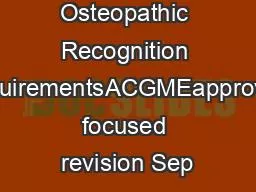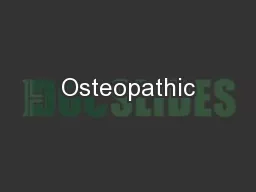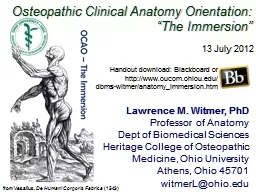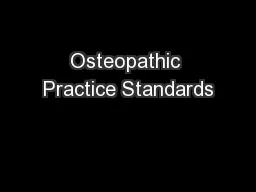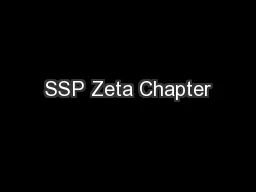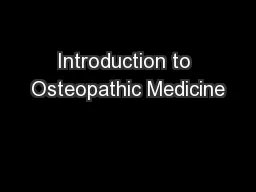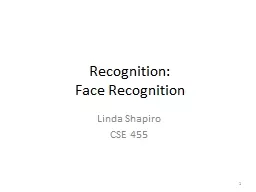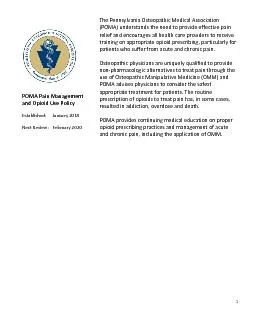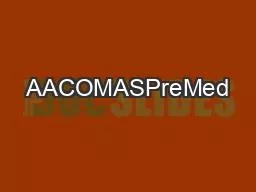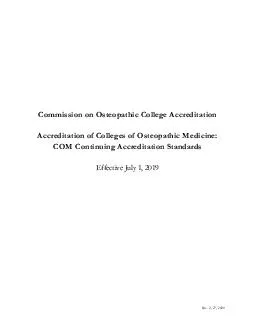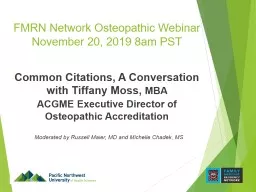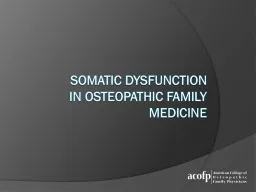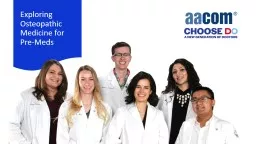PDF-Osteopathic Recognition RequirementsACGMEapproved focused revision Sep
Author : tabitha | Published Date : 2021-10-02
x0000x0000Osteopathic RecognitionRequirementsAccreditation Council for Graduate Medical Education ACGMEPage of ContentsIntroductionOsteopathic Program PersonnelDirector
Presentation Embed Code
Download Presentation
Download Presentation The PPT/PDF document "Osteopathic Recognition RequirementsACGM..." is the property of its rightful owner. Permission is granted to download and print the materials on this website for personal, non-commercial use only, and to display it on your personal computer provided you do not modify the materials and that you retain all copyright notices contained in the materials. By downloading content from our website, you accept the terms of this agreement.
Osteopathic Recognition RequirementsACGMEapproved focused revision Sep: Transcript
Download Rules Of Document
"Osteopathic Recognition RequirementsACGMEapproved focused revision Sep"The content belongs to its owner. You may download and print it for personal use, without modification, and keep all copyright notices. By downloading, you agree to these terms.
Related Documents

